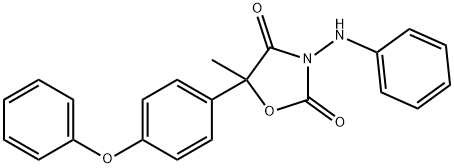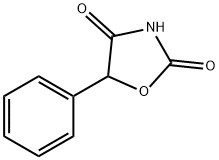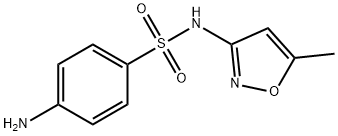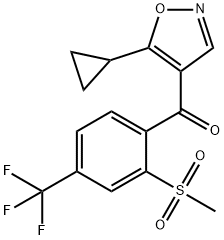FamoxadoneSolutioninAcetonitrile , 100μg/mLinAcetonitrile,uncertainty3% , 131807-57-3
Synonym(s):
3-Anilino-5-methyl-5-(4-phenoxyphenyl)oxazolidine-2,4-dione
CAS NO.:131807-57-3
Empirical Formula: C22H18N2O4
Molecular Weight: 374.39
MDL number: MFCD03427409
EINECS: 603-520-1
| Pack Size | Price | Stock | Quantity |
| 1.2ml | RMB119.20 | In Stock |
|
| others | Enquire |
PRODUCT Properties
| Melting point: | 140.3~141.8℃ |
| Boiling point: | 491.3±55.0 °C(Predicted) |
| Density | 1.327±0.06 g/cm3(Predicted) |
| vapor pressure | 6.4 x 10-7 Pa (20 °C) |
| Flash point: | 2 °C |
| storage temp. | 0-6°C |
| solubility | DMSO: 100 mg/mL (267.10 mM) |
| form | Solid:particulate/powder |
| Water Solubility | 0.243 mg-1 (pH 5), 0.011 mg l-1 (pH 7)
at 20 °C |
| pka | 0.63±0.40(Predicted) |
| color | White to yellow |
| LogP | 4.65-5.08 at 20℃ and pH4-7 |
| Surface tension | 73mN/m at 90μg/L and 20.4℃ |
| EPA Substance Registry System | Famoxadone (131807-57-3) |
Description and Uses
Famoxadone is an oxazolidinedione fungicide. Although famoxadone is not a strobilurin derivative, it shares the same mechanism of action. Famoxadone provides control of a broad spectrum of fungi but is particularly effective against downy mildew (P. viticola), late and early blights (Phytophthora infestans and Alternaria solani), the Septoria complex, and barley net blotch at rates of 50 to 200 g ai/ha. Target crops include vines, potatoes/tomatoes, cereals, sugar beets, canola, and cucumber. It shows good protectant, translaminar and residual control, with excellent rainfastness and good crop safety. As was seen for trifloxystrobin, it is particularly effective against grape downy mildew when applied in mixture with cymoxanil. The cereal disease spectrum and level of disease control are improved when famoxadone is mixed with triazole fungicides such as flusilazole.
Famoxadone provides preventive control of a broad spectrum of fungal pathogens such as Plasmopara viticola (grape downy mildew), Phytophthora infestans (potato/ tomato late blight), Pseudoperonospora cubensis (cucumber downy mildew), Septoria tritici (wheat leaf blotch), S. nodorum (wheat glume blotch) and Alternaria solani (potato/tomato early blight).
Safety
| Symbol(GHS) |   GHS02,GHS07 |
| Signal word | Danger |
| Hazard statements | H225-H302-H312-H319-H332 |
| Precautionary statements | P210-P280-P305+P351+P338 |
| Hazard Codes | Xn,N,F |
| Risk Statements | 48/22-50/53-36-20/21/22-11 |
| Safety Statements | 46-60-61-36-26-16-36/37 |
| RIDADR | UN1648 3/PG 2 |
| WGK Germany | 2 |
| Hazardous Substances Data | 131807-57-3(Hazardous Substances Data) |
| Toxicity | LD50 in rats (mg/kg): >5000 orally; >2000 dermally (Joshi, Sternberg) |





